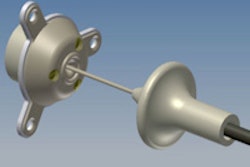PARIS - French researchers have found that contrast-enhanced ultrasound can help to determine whether chemotherapy should be stopped, continued, or even enhanced, according to a presentation at the Journées Françaises de Radiologie (JFR), the annual congress of the French Society of Radiology.
According to the group, the study indicates that a low-cost contrast-enhanced ultrasound exam can save money for the French healthcare system by enabling more accurate use of chemotherapy, which can be both expensive and difficult for patients.
Researchers from the Institut Gustave-Roussy (IGR), a cancer hospital just outside of Paris, offered preliminary findings on October 23 from a multicenter study using a novel contrast-based functional imaging technique for ultrasound.
Principal investigator Nathalie Lassau, MD, PhD, and colleagues used dynamic contrast-enhanced ultrasound (DCE-US) combined with quantitative assessment of solid tumor perfusion using raw linear data in a group of 539 patients with multiple types of cancer who were being treated with 15 different antiangiogenic drugs.
Sixty-five radiologists were trained in the technique at 19 centers across France participating in the trial, as part of study criteria necessary to demonstrate that results are reproducible and not operator-dependent.
Raw data were analyzed with a mathematical model to evaluate seven parameters characterizing the tumor perfusion curve and response to treatment. Data were reviewed every two months with Response Evaluation Criteria in Solid Tumors (RECIST).
Results showed that five parameters exhibited a significant difference in their variation between exams on day 1, day 30, and at six months. Two parameters, area under the curve (AUC) and area under the wash out (AUWO), proved to be statistically robust and a significant predictor at 30 days for the response rate at six months, said Anthony Sarran, MD, from the Institut Paoli-Calmettes in Marseille, France, who presented the results at the JFR.
The clinical value of establishing a standardized assessment for ultrasound functional imaging is already drawing interest from drug discovery teams developing chemotherapy candidates with major pharmaceutical companies, according to Lassau.
Yet the study, supported by the French National Cancer Institute, also has end points for medical economics.
"Currently, we need to wait a minimum of six months to know if a treatment is effective, and the cost of treatment is between $3,000 and $5,000 per month," Sarran reported. "There is a tremendous opportunity for savings for the national health insurance fund, not to mention the enormous benefit to patients receiving a toxic therapy with severe side effects."
A second economic consideration is the widespread availability of ultrasound in France, which suffers from a severe shortage of MRI and CT systems.
Sarran said the exam costs 182 euros ($252 U.S.), using two bolus injections of contrast (SonoVue, Bracco Imaging, Milan) and an Aplio ultrasound scanner (Toshiba Medical Systems, Otawara, Japan). Nearly half of the cost of the exam is for the contrast agent, which is not yet available in the U.S.
The technique can only be performed on the Toshiba Aplio and Aplio XG systems for the moment. Lassau said that while only Toshiba was willing to share raw linear data in 2007 when the study began, "most manufacturers have now come forward."
Christoph Simm, ultrasound business manager for Toshiba's European business, said that the company showed JFR attendees a beta version of the technique, which the company calls contrast harmonic imaging quantification (CHI-Q). Plans for introduction to the U.S. market are pending U.S. Food and Drug Administration clearance.
Lassau said that if all goes well, she will be able to present final results in November in Chicago.
"Everything depends on the last 40 patients," she said, noting that it's the final cohort needed to meet a statistical threshold of 579 patients required for drawing conclusions.
By John Brosky
AuntMinnie.com contributing writer
October 27, 2010
Copyright © 2010 AuntMinnie.com











